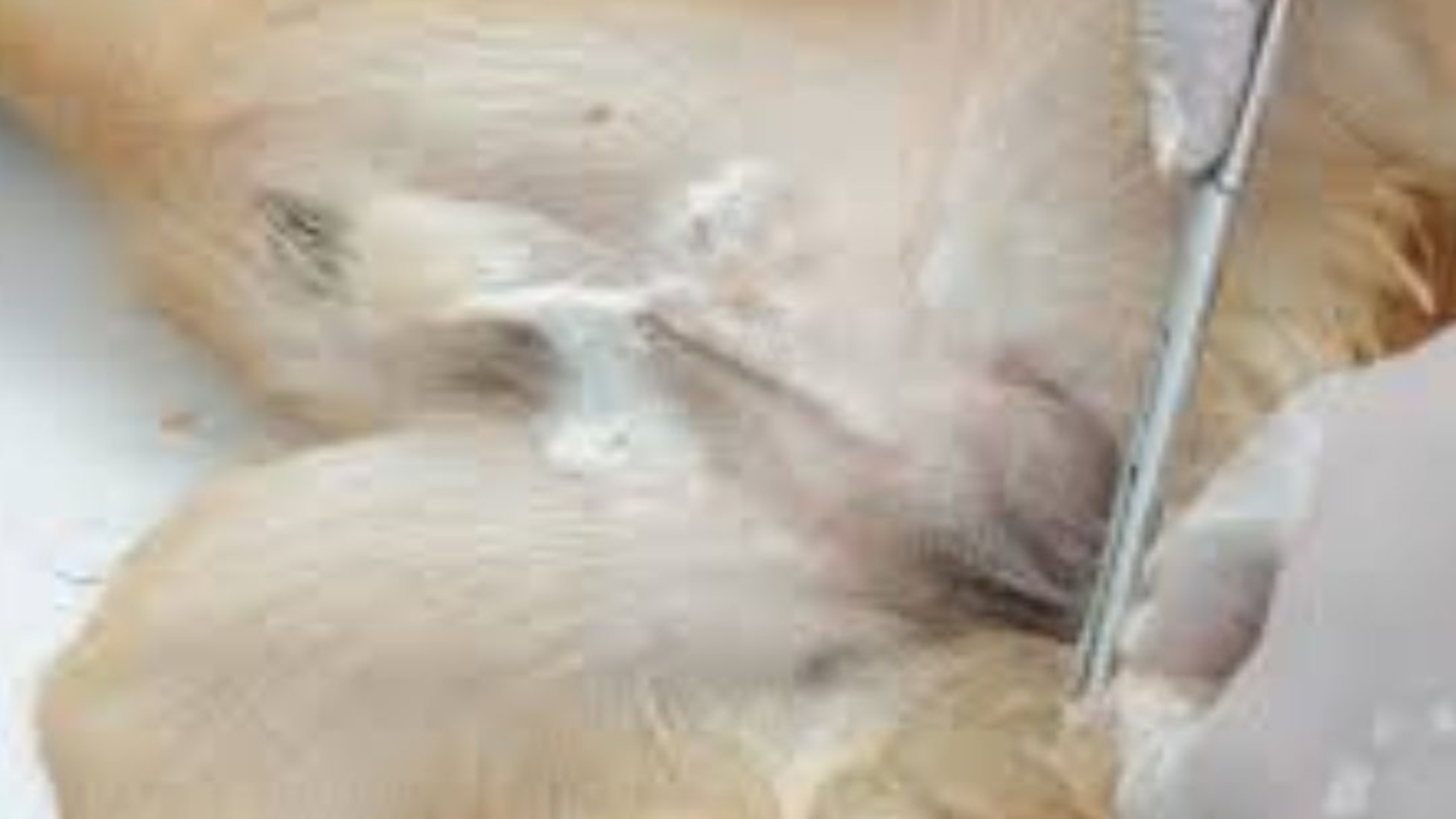Dog neutering will provide an in-depth process, its benefits and potential risks, and everything you need to know to make an informed decision for your pet
Introduction
Dog neutering is a significant decision for pet owners, involving the surgical removal of a male dog’s testicles. This procedure not only prevents unwanted litters but also contributes to various health and behavioral benefits. In this comprehensive guide, we’ll explore everything you need to know about dog neutering, including its benefits, the procedure itself, recovery, and frequently asked questions.

- What is dog neutering?
- Benefits of Dog Neutering
- What are the Advantages of your dog neutering
- What are the Side effects of your dog neutering
- Is neuter surgery risky for a dog?
- When to dog neutering
- How to tell if a dog is neutered
- Process of dog neutering
- Pre-neuter surgery preparation
- Neutered dog recovery kit
- What to expect after neutering your dog
- How much does it cost to get your dog neutered?
- Summary of neutering your dog
What is Dog Neutering?
Dog neutering, also known as castration, is a veterinary procedure where a male dog’s testicles are surgically removed. This operation is typically performed under general anesthesia and is considered a routine practice in veterinary medicine. Neutering is crucial in controlling the pet population and preventing the birth of unwanted puppies.

Benefits of Dog Neutering
Population Control: Neutering helps control the dog population, reducing the number of stray and homeless dogs.
Health Benefits: Neutered dogs have a lower risk of developing certain cancers and prostate issues.
Behavioral Improvements: Neutering can reduce undesirable behaviors such as aggression, marking territory, and roaming.
Cost Savings: Preventing unwanted litters can save money on the cost of caring for additional puppies.
Community Benefits: Reduces the number of dogs in shelters, allowing resources to be better allocated.
The Dog Neutering Procedure
The neutering procedure is relatively simple and typically performed in a veterinary clinic. Here’s a step-by-step overview:
Pre-surgery Examination: The vet conducts a thorough health check to ensure the dog is fit for surgery.
Anesthesia: The dog is put under general anesthesia to ensure a pain-free procedure.
Incision: A small incision is made near the scrotum.
Removal of Testicles: The testicles are removed through the incision.
Suturing: The incision is sutured, and the dog is monitored as it wakes up from anesthesia.
Recovery and Aftercare
Post-surgery care is crucial to ensure a smooth recovery. Here are some tips for taking care of your dog after neutering:
Rest and Restriction: Limit your dog’s activity to prevent strain on the incision.
Monitor the Incision: Check the incision site daily for signs of infection or complications.
E-collar Usage: Use an e-collar to prevent your dog from licking or biting the incision.
Pain Management: Administer prescribed pain medications to keep your dog comfortable.
Follow-up Visits: Attend all scheduled follow-up appointments with your vet.
Potential Risks and Complications
While neutering is a common and generally safe procedure, there are some potential risks, including:
Infection: As with any surgery, there is a risk of infection at the incision site.
Anesthetic Reactions: Some dogs may have adverse reactions to anesthesia.
Bleeding: Excessive bleeding can occur, though it is rare.
Behavioral Changes: While neutering often reduces undesirable behaviors, it can sometimes lead to changes in personality or energy levels.
What are the Advantages of your dog neutering
Neutering your dog can have many advantages, both for your dog and for you as a pet owner. One of the main benefits of neutering is the prevention of unwanted litters. By having your dog neutered, you can help control the pet population and reduce the number of dogs that end up in shelters or on the streets. This can also help decrease the number of stray and feral dogs, which can lead to a safer and more humane community for both animals and people.
Neutering can also have health benefits for your dog. Neutering can help reduce the risk of certain types of cancer, such as testicular cancer. It can also decrease the likelihood of your dog developing certain behavioral problems, such as aggression or marking territory. Neutering can also help prevent your male dog from roaming in search of a mate, which can lead to accidents or injuries, such as getting hit by a car.
Neutering can also have behavioral benefits for your dog. For example, neutered dogs are often less likely to exhibit behaviors such as urine marking, roaming, and aggression. Neutered dogs may also be less likely to engage in dominance-related behaviors, such as mounting other dogs or people. Overall, neutering can help your dog be calmer, more obedient, and less likely to engage in problematic behaviors.

The advantages of neutering your dog are numerous and can have a positive impact on both your dog’s well-being and your own. If you are considering having your dog neutered, be sure to consult with your veterinarian to discuss the best options for your dog.
What are the Side effects of your dog neutering
Neutering is generally a safe and routine surgery, there are some side effects that may occur in a small percentage of dogs.
One common side effect of dog neutering is swelling and bruising around the surgical site. This is typically mild and should improve within a few days after the surgery. Swelling and bruising can be managed with proper pain medication and by keeping your dog calm and rested.
Another side effect that may occur after neutering is a change in your dog’s behavior. Some dogs may become more lethargic or anxious after the surgery, while others may experience an increase in appetite. It is important to monitor your dog’s behavior closely after neutering and consult your veterinarian if you have any concerns.
In some cases, male dogs may experience a temporary change in their urinary habits after neutering. This can include difficulty urinating or an increased frequency of urination. These symptoms should improve within a few days, but if they persist, it is important to consult your veterinarian.
Is neuter surgery risky for a dog?
Neutering, also known as castration, is a common surgical procedure carried out on male dogs to remove their testicles. This procedure is done as a means to prevent unwanted pregnancies, reduce the risk of certain health issues, and control behaviors such as aggression and roaming. But, like any surgery, there are risks associated with neutering that pet owners should be aware of.
One of the main concerns when it comes to neutering surgery is the risk of complications during or after the procedure. While it is considered a routine operation, there is always a small chance of complications occurring. Some of the potential risks include the dog reacting negatively to anesthesia, bleeding during surgery, infection at the surgical site, or issues with wound healing. These complications are generally rare, but they can still occur and should be discussed with your veterinarian beforehand.
Another risk associated with neutering surgery is the potential for long-term health effects. While neutering has been shown to reduce the risk of certain health issues such as testicular cancer and prostate problems, some studies have suggested that it may also increase the risk of other health problems, such as obesity and certain types of cancer. It is important to talk to your vet about the potential benefits and risks associated with neutering to determine the best course of action for your dog’s health.
When to dog neutering
Deciding when to neuter your dog is an important decision that requires careful consideration. Many factors come into play when determining the best time to have your dog neutered. The age, breed, size, and health of your dog all play a role in determining the optimal time for this procedure.
In general, most veterinarians recommend having male dogs neutered between the ages of six to nine months. This is typically before the dog reaches sexual maturity and before they start exhibiting any unwanted behaviors such as aggression or territorial marking. Neutering at this age also reduces the risk of certain health issues such as testicular cancer and prostate problems.

How to tell if a dog is neutered
One of the most obvious signs that a dog has been neutered is the absence of reproductive organs. Male dogs who have been neutered will no longer have testicles, while female dogs will no longer have a uterus or ovaries. If you’re able to visually inspect your dog’s genital area, this can be a quick and easy way to confirm whether they have been spayed or neutered.
Aside from physical signs, there are also behavioral clues that may indicate whether a dog has been neutered. Neutering can have a calming effect on dogs, reducing their hormone-driven behaviors such as aggression, marking, and roaming. If your dog is generally well-behaved and doesn’t exhibit these types of behaviors, they may have been neutered.
Process of dog neutering
Neutering is a surgical procedure that involves the removal of a dog’s reproductive organs, specifically the testes in male dogs. This procedure is typically recommended for both health and behavioral reasons.
Dog neutering is a common surgical procedure that can benefit both the health and behavior of your dog. By removing the testes, male dogs are unable to reproduce, reducing the risk of unwanted litters and certain health issues. Neutering can also have positive effects on behavior, making male dogs more manageable and easier to live with as part of the family. If you are considering neutering your dog, it is best to consult with your veterinarian to determine if the procedure is right for your dog.
Pre-neuter surgery preparation
Getting your dog neutered is an important decision that requires some preparation beforehand. This procedure not only helps control the pet population but also has many health benefits for your dog. Before your dog goes in for the neuter surgery, there are a few things you need to know and do to ensure a smooth process.

First and foremost, speak with your veterinarian about the procedure and any concerns you may have. They can provide you with information about what to expect during the surgery, potential risks, and aftercare instructions.
It’s also important to schedule an appointment for the neuter surgery well in advance.
On the day of the surgery, make sure your dog is clean and free of any external parasites like fleas or ticks. This will help prevent any complications during the surgery and promote better healing. Your veterinarian may also recommend doing some blood work before the surgery to ensure that your dog is healthy enough for the procedure.
It’s also a good idea to prepare your home for your dog’s recovery after the surgery. Set up a quiet and comfortable space for your dog to rest and recuperate, away from other pets and distractions. Make sure to stock up on any necessary supplies like pain medications, a cone to prevent your dog from licking the incision site, and any other items recommended by your veterinarian.
Neutered dog recovery kit
Creating a neutered dog recovery kit beforehand can help you be prepared and ensure that your pet has everything they need during this healing period.
One essential item to include in your neutered dog recovery kit is a cone or e-collar. This is crucial to prevent your dog from licking or chewing at the surgical site, which can lead to infection and other complications. Make sure the cone fits properly and is comfortable for your dog to wear.
What to expect after neutering your dog
One of the first things you may notice after neutering your dog is a change in their behavior. Neutering can help reduce aggression, marking, and wandering in male dogs. Female dogs may also experience a decrease in behaviors such as roaming and being in heat. However, it’s important to note that each dog is unique and some may not show any significant changes in behavior post-neutering
After the surgery, your dog will need time to recover. It’s important to follow your veterinarian’s post-operative care instructions closely to ensure a smooth recovery. Your dog may experience some discomfort, swelling, or bruising in the area where the incision was made. It’s important to keep an eye on the incision site and contact your veterinarian if you notice any signs of infection.

How much does it cost to get your dog neutered?
When it comes to getting your dog neutered, one of the first things that may come to mind is the cost. The cost of getting your dog neutered can vary depending on a few different factors.
One factor that can impact the cost of getting your dog neutered is the size and breed of your dog. Larger dogs or certain breeds may require more anesthesia or have a more complicated surgery, which can raise the cost. Additionally, the location of the veterinary clinic or hospital where you choose to have the procedure done can also play a role in how much you will have to pay. Urban areas or more expensive neighborhoods may have higher costs for veterinary services.

On average, the cost of getting a dog neutered can range from $50 to $500. Some clinics may offer lower-cost options for those who may not be able to afford the full price. These low-cost options can be a great way to ensure that your dog is spayed or neutered without breaking the bank. However, it is important to do your research and make sure that the clinic or hospital you choose offers quality services and is reputable..
Q: At what age should I neuter my dog?
A: Most veterinarians recommend neutering dogs between six to nine months of age, but it can be done as early as eight weeks in some cases.
Q: Will neutering affect my dog’s behavior?
A: Neutering can reduce aggressive and territorial behaviors but won’t change your dog’s fundamental personality.
Q: How long does the recovery process take?
A: Recovery typically takes about 10-14 days. It’s important to follow your vet’s instructions during this period.
Q: Is neutering painful for my dog?
A: The procedure is performed under anesthesia, so your dog won’t feel pain during surgery. Post-operative pain can be managed with medication.
Q: Are there alternatives to neutering?
A: Alternatives include chemical castration or hormone therapy, but these are less common and may not offer the same benefits as surgical neutering.
- Dog neutering is a routine surgical procedure with significant health and behavioral benefits.
- It helps control the dog population, reducing the number of stray and homeless dogs.
- The procedure involves a pre-surgery examination, anesthesia, removal of the testicles, and suturing.
- Post-surgery care is crucial for a smooth recovery, including rest, monitoring the incision, and pain management.
- While generally safe, there are potential risks such as infection and anesthetic reactions.
Conclusion
Dog neutering is a responsible choice for pet owners, contributing to the well-being of individual dogs and the broader community. By understanding the procedure, benefits, and aftercare, you can make an informed decision about neutering your dog. Always consult with your veterinarian to determine the best timing and approach for your pet.

Leave A Comment